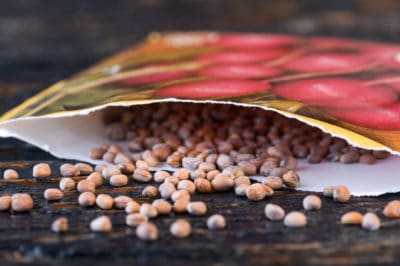Soil Conditions
Radishes grow quickly and need a steady supply of nutrients. Phosphorus is required for root development. Too much nitrogen promotes leafy growth at the expense of the roots. Work some bone meal or rock phosphate into the soil each fall. Use compost, aged manure or shredded leaves to add additional nutrients and humus to the soil. Soil should be friable and at least eight inches deep.
Seasonal Planting
Root radishes are classic spring and fall crops, although some can be carried over the winter. Edible podded radishes can handle the heat of summer. In spring, plant radish seeds as early as four weeks before the last expected frost. You can also sow seeds in late summer and early fall. Plant edible podded radish seed in mid to late spring.
Varieties
Using different varieties offers multiple taste and color options as well as a longer radish season. Here are some possible choices:
- Cherry Belle – 22 days, round and red
- French Breakfast – 25 days, carrot-shaped
- Daikon – 60 days, can grow to 18 inches
- Misato Green – 60 days, pale green
- Black Spanish – 60 days or more, good for winter growing
- Rat Tail Radish – 50 days, long harvest period, edible podded radish
Spacing and Thinning
Most radishes don’t take much space, so you can plant seeds close – about one inch. Winter radishes may grow larger and should have more space initially or be thinned. Varieties such as Sakurajima Mammoth can reach 10 inches and should be thinned to 12 inches. Radish roots are easily disturbed so thin seedlings by cutting just above ground with sharp scissors.
Seed Germination
Soil and air temperatures are both important when planting radishes from seed. You’ll get best results when air temperatures range from 50 to 65 °F (10 to 18°C). Radishes prefer soil temperatures of 45 to 85 °F (7 to 29°C). A cool season plant, radish seeds typically refuse to germinate at soil temperatures above 95 °F (35°C). A little shade may promote germination if temperatures are warming.
Watering
Watering radish seeds is a balancing act. Too much water encourages rot. Too little water, however, can stop seed germination in its tracks. Too little water when growing can stunt growth or make the radishes hot to taste. Uneven watering also increases the risk that the radish bulbs will split. Keep soil evenly moist by watering when the top layer feels dry to the touch.
